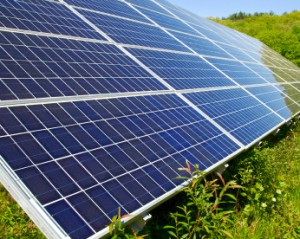 One of the strongest stories of the last decade has been the rise of renewables. While a lot of politics comes to play in the world of renewable energy, and the debate between the believers and the climate deniers rages on, one thing is for certain that renewable energy is very much here, and it’s here to stay.
One of the strongest stories of the last decade has been the rise of renewables. While a lot of politics comes to play in the world of renewable energy, and the debate between the believers and the climate deniers rages on, one thing is for certain that renewable energy is very much here, and it’s here to stay.
As a biodiversity business, making our own huge effort to proactively protect the planet we all share, that’s something that we welcome. In the last year or so, I’ve wondered though, what more can we do to work with renewable energy companies to make them more individually sustainable. Some of these firms are responsible for offsetting the equivalent carbon footprint of a small country, but what can they do individually as businesses. Many people within the sector that I have spoken to have talked about recycling schemes, more efficient fleet vehicles, increased use of public transport and reduced travelling between offices. But is that not what all businesses are striving to do, and should they as companies who’s very core is sustainability, not be taking more of a lead?
There are many sectors within the renewable energy field, from solar to onshore wind energy and hydro to anaerobic digestion. The areas of solar and onshore wind farms could however be criticised for being in effect ‘green deserts’, a phrase sometimes volleyed at golf courses. These largely open sites could particularly benefit from managed beehives and associated wild flower meadows, such as that we are installing for one of our large corporate partners.
While providing a very valuable environmental service these projects can often be viewed as replacing a rich biodiverse environment or agricultural land. Renewable energy companies are however very careful in meeting the ecological needs of the site. Currently the largest onshore wind farm at Whitelees outside Glasgow has a 25km2 area of habitat management. The UK’s currently largest solar farm at Paddock Wood is the size of 35 football pitches. Developers have taken proactive steps to turn the 95% of unused land there into a nature sanctuary, rich in biodiversity.
These are exemplar projects, but surely there are areas of other solar farms and wind farms where the land could be doing more. The areas in between the photovoltaic panels or wind turbines could be transformed into rich biodiverse meadows, providing a wealth of nectar to be turned into abundant supplies of honey. Bees kept on such sites will also help to pollinate surrounding crops, ensuring a wider, long-term community role.
A more active sustainability agenda can also add valuable points through the tendering process for such consultation and construction work. Large companies, particularly those in the construction industry are often working to meet ambitious Government targets or to pass on sustainability points to clients. Bigger companies can also use supplier diversity schemes as ‘win themes’ in major bids, and therefore working with small, diverse or sustainable businesses can pay dividends in tendering.
While the very essence of a renewables project has a sustainable core, companies adding additional environmental and bio-diverse elements to their proposals as their unique selling point (USP) can gain extra accreditation through what is often a very close-run tendering contest. Using Plan Bee managed hives as a USP can also become a positive talking point within the community and local media.
Such community engagement is a much used tool within the process, to the point where it is taken as a ‘gimme’ to borrow again from golf. However, by adding nursery school, primary school and community group beehive and biodiversity lessons onto the mix of stakeholder management services, then we see the development of a long-term, or dare we say ‘legacy’ offering for the local community. And, there’s potential reward for the community with each of our hives producing 24 jars of high quality honey every year, to be gifted to the community or perhaps sold in on-site gift shops.
So while many sustainability companies might ask ‘What’s in it for me?’ the answer would most certainly be that unique selling point, that opportunity to excel beyond the competition and to more directly engage with a potentially hostile local community to create a legacy, and give something back in the longer term over and above the now expected elements of the community fund. This is a diverse opportunity to restore the area to its former glory either as a site of biodiversity, or an area previously used for the production of high-quality, local food.